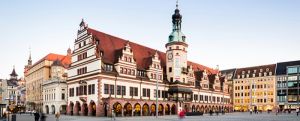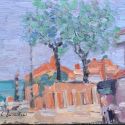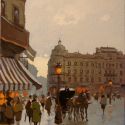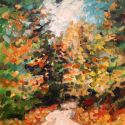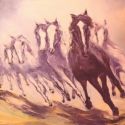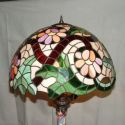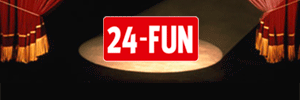Charles Delacroix died in 1805; in 1814 Eugène’s mother followed, leaving him an orphan at the age of 16. In 1816 he entered l'École des Beaux-Art, where he befriended Bonington and Pierret.
In 1822 his La Barque de Dante (189x242cm) was accepted for the Paris Salon and subsequently acquired by the state (it would be smudgily imitated by Cézanne in 1870: La Barque de Dante, après Delacroix). At the 1824 Salon Delacroix presented The Massacre of Chios (417x354cm -- here is a detail), a personal reaction to the genocide practiced by the Sublime Porte against the Greeks. This work placed Delacroix firmly among the Romantic painters. Summer of 1825 he spent with Bonington in England, acquainting himself with English literature; made lithograph illustrations for Macbeth and Hamlet and heroes of Sir Walter Scott and Byron.
In 1828 a series of 17 lithographs illustrating Goethe’s Faust was published. At the 1828 Salon Delacroix exhibited The Death of Sardanapalus and The Execution of Marino Faliero. In his Liberty Leading the People (28 July 1830) (260x325cm) Delacroix expressed his emotions and understanding of the July Revolution of 1830, and included his own self-portrait, holding a musket, in the first rank of the people in arms following Lady Liberty [image above].

In 1832, Delacroix spent 6 months in North Africa, in the retinue of the Count Charles de Mornay, Ambassador to the Sultan of Morocco, abd er-Rugman. The life and customs of the Arabs fascinated him and were to inspire many paintings: The Fanatics of Tangier (1837-1838), The Sultan of Morocco and His Entourage (1845), The Lion Hunt in Morocco (1854), Arab Saddling His Horse (1855). In 1833-1837 Delacroix received many commissions for portraits, decorated the King's Chamber in the Palais Bourbon: Frescoes on the west wall (1833-1837). His Women of Algiers in Their Apartment (1834, 180x229cm) was a great success at the 1834 Salon.


